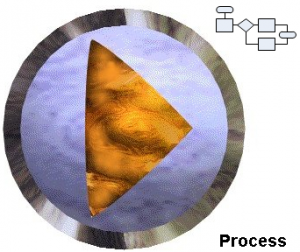12 Mar Artificial Smarts – Intro to Section 8
 Welcome to Section 8 of Understanding Context. Click here for the table of contents. After having gone into too much and not enough detail about the brain and how it enables us to thing and understand one another, it’s time to apply this knowledge to making computers do more for us. That’s what this section is all about.
Welcome to Section 8 of Understanding Context. Click here for the table of contents. After having gone into too much and not enough detail about the brain and how it enables us to thing and understand one another, it’s time to apply this knowledge to making computers do more for us. That’s what this section is all about.
Computer software applications (apps for short and for mobile) and the processes of which they are composed may be said to exhibit intelligence. What counts as “smarts” may be a moving target. Before the invention of the pocket calculator, mathematics was believed to require intelligence. Is it an insult to the human brain or to the God who created it to replace its complex capabilities with a mere device? You decide. I the mean time, I have some experience with application development, its processes and outcomes I would like to share with you.
| Understanding Context Cross-Reference |
|---|
| Click on these Links to other posts and glossary/bibliography references |
| Prior Post | Next Post |
| Section 7 – Cyber Modeling | Section 9 – The End of Code |
| Definitions | References |
| software processes | |
| algorithms heuristics |
Intelligent Design
 In this section of the Understanding Context blog, I will post my ideas about specific designs for smarter software. Smarter algorithms and heuristics will not be my only target. Having served the corporate thirst for better automation for a few decades, I have ideas about how to go about defining the need and the approach, then executing successful projects to deliver the capabilities. Part of the discussion is just about defining the value proposition correctly, and another part is about design engineering and project management methodologies. No matter how smart the idea is, if you can’t build it efficiently, it may never get off the ground. And just because you launch a software package, doesn’t mean people will use it.
In this section of the Understanding Context blog, I will post my ideas about specific designs for smarter software. Smarter algorithms and heuristics will not be my only target. Having served the corporate thirst for better automation for a few decades, I have ideas about how to go about defining the need and the approach, then executing successful projects to deliver the capabilities. Part of the discussion is just about defining the value proposition correctly, and another part is about design engineering and project management methodologies. No matter how smart the idea is, if you can’t build it efficiently, it may never get off the ground. And just because you launch a software package, doesn’t mean people will use it.
Social Media
![]() There is something perversely intelligent about social media. Please don’t shoot me yet – hear me out. Social models provided by Twitter for instant knowledge sharing, Maven for consultative knowledge sharing, Linked-In for building circles of affinity, and others have proven extremely valuable in promoting the cross-pollination of ideas. This cross-pollination is of incalculable importance in sharing knowledge. There are pockets of knowledge everywhere in the world, and the entire family benefits from every little thing we do to understand one-another, and disseminate local knowledge so it becomes general and accessible knowledge.
There is something perversely intelligent about social media. Please don’t shoot me yet – hear me out. Social models provided by Twitter for instant knowledge sharing, Maven for consultative knowledge sharing, Linked-In for building circles of affinity, and others have proven extremely valuable in promoting the cross-pollination of ideas. This cross-pollination is of incalculable importance in sharing knowledge. There are pockets of knowledge everywhere in the world, and the entire family benefits from every little thing we do to understand one-another, and disseminate local knowledge so it becomes general and accessible knowledge.
| Click below to look in each Understanding Context section |
|---|
| Intro | Context | 1 | Brains | 2 | Neurons | 3 | Neural Networks |
| 4 | Perception and Cognition | 5 | Fuzzy Logic | 6 | Language and Dialog | 7 | Cybernetic Models |
| 8 | Apps and Processes | 9 | The End of Code | 10 | Glossary | 11 | Bibliography |









[…] intelligence (see the section on AI), […]